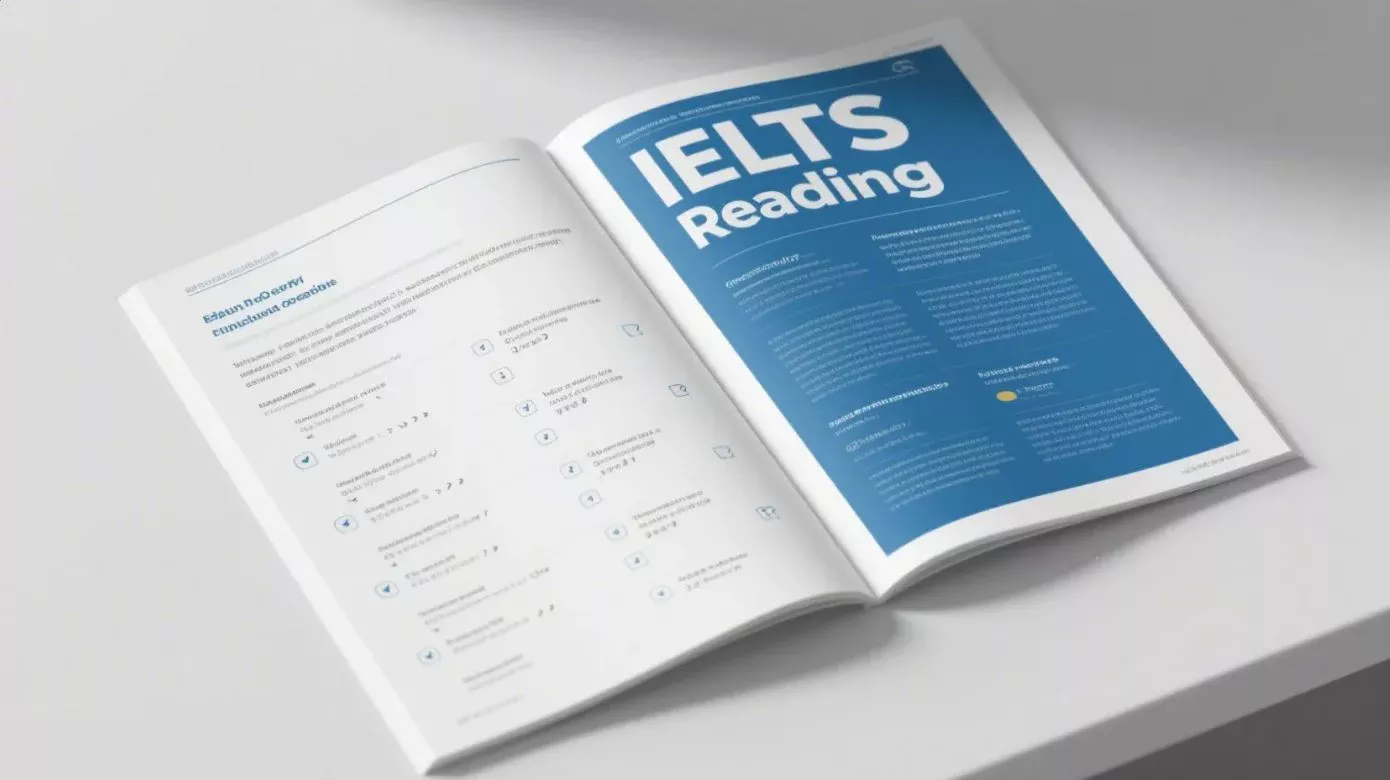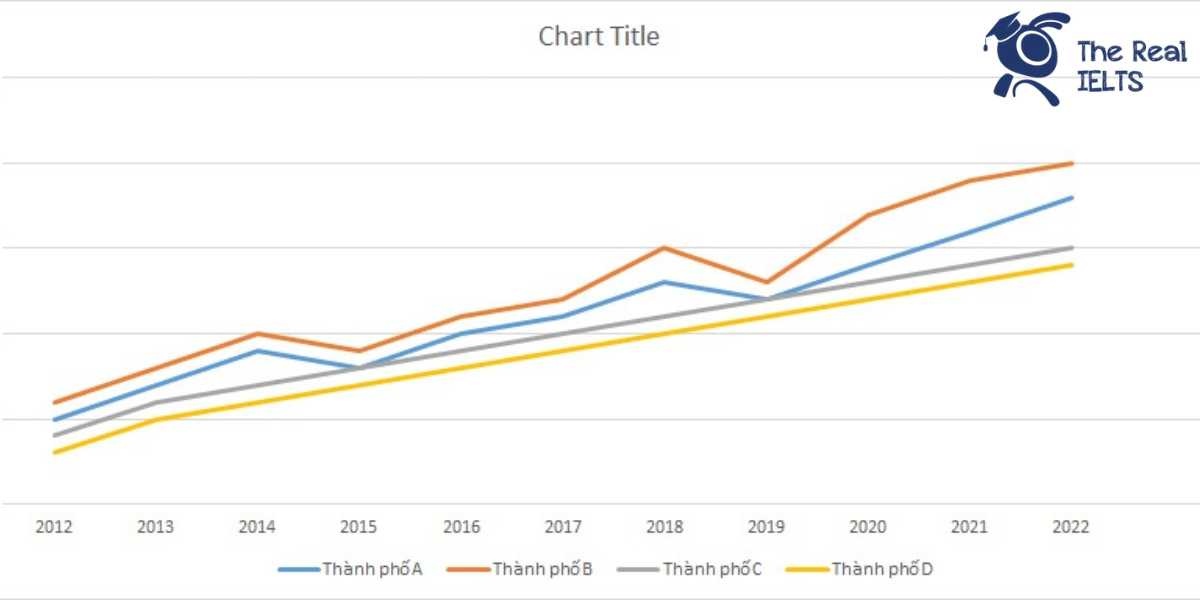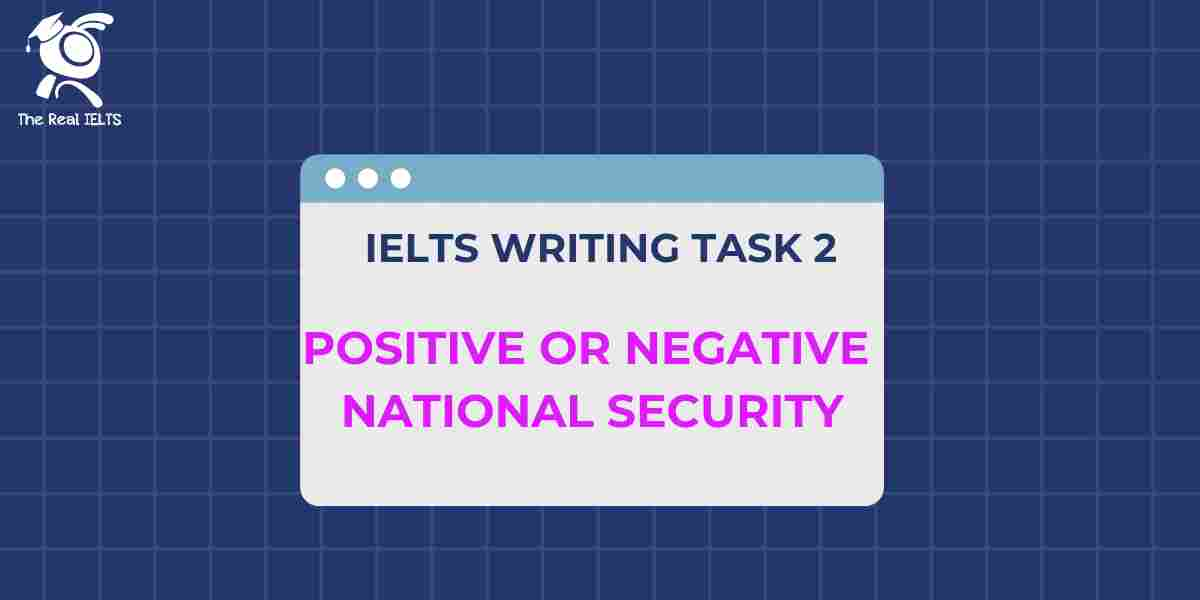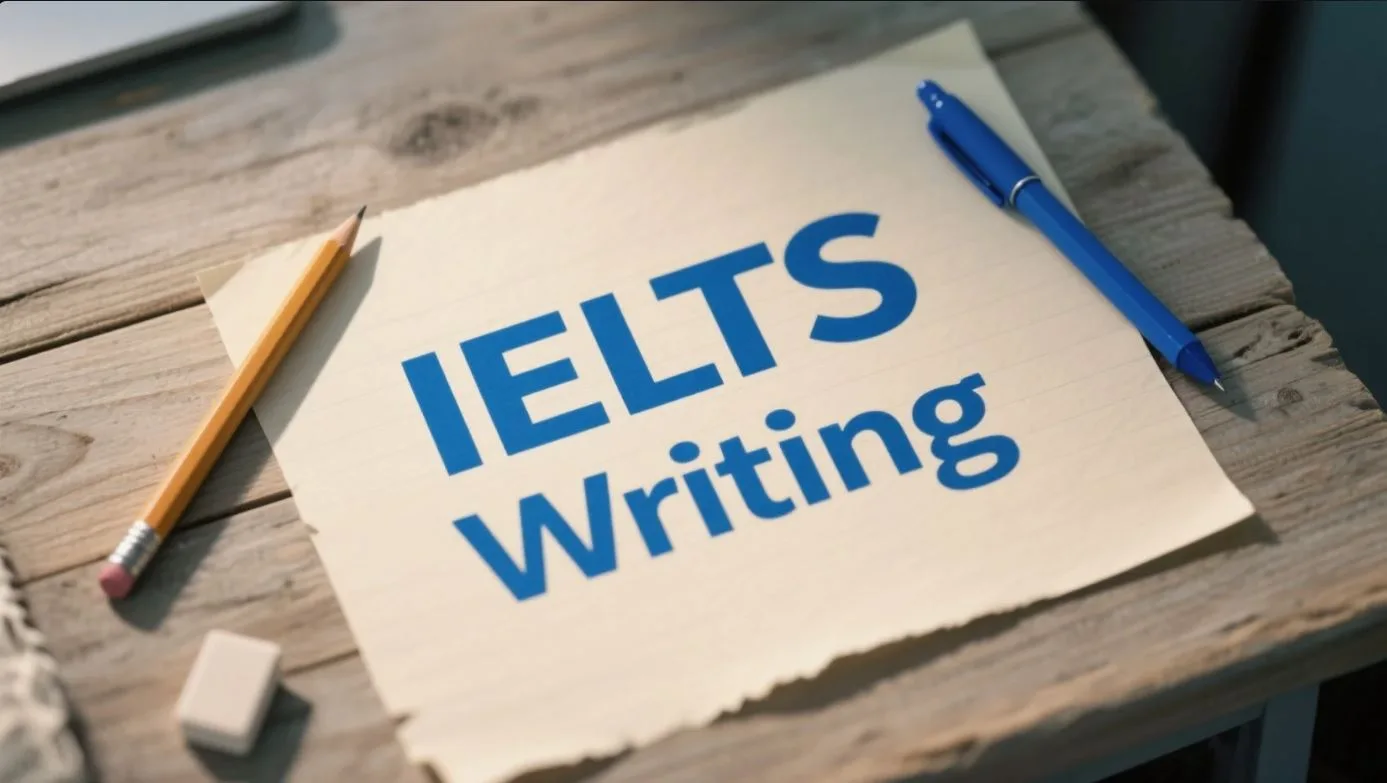Phần thi đọc hiểu trong IELTS luôn là thử thách lớn đối với thí sinh, yêu cầu khả năng xử lý văn bản học thuật dưới áp lực thời gian. IELTS Reading kiểm tra kỹ năng đọc nhanh, nắm bắt ý chính và phân tích chi tiết qua ba đoạn văn với độ khó tăng dần. Để đạt band cao, người học cần trau dồi từ vựng chuyên sâu, rèn luyện chiến lược skimming, scanning và quản lý 60 phút hiệu quả, đảm bảo trả lời chính xác 40 câu hỏi.
Đọc thêm: IELTS Reading 11 dạng bài phần 2
The Impact of Renewable Energy
Renewable energy sources, such as solar, wind, and hydropower, are increasingly vital in addressing global energy demands and environmental concerns. Unlike fossil fuels, these sources produce little to no greenhouse gas emissions, helping to mitigate climate change. Solar panels convert sunlight into electricity, while wind turbines harness air currents to generate power. Hydropower, derived from moving water, is one of the oldest and most reliable renewable sources, often used in large-scale dams. According to a 2020 report, renewable energy accounted for nearly 30% of global electricity production, with solar and wind experiencing the fastest growth.
The adoption of renewables has economic benefits, including job creation in manufacturing and installation sectors. However, challenges remain. The high initial costs of setting up solar farms or wind turbines can deter investment, particularly in developing countries. Additionally, renewable energy depends on weather conditions, making it less consistent than traditional energy sources. For instance, solar panels are less effective on cloudy days, and wind turbines require steady winds. To address this, researchers are improving energy storage technologies, such as batteries, to store excess power for use during low-production periods.
Governments worldwide are promoting renewables through subsidies and policies, aiming to reduce reliance on fossil fuels. While progress is evident, experts argue that a complete transition to renewable energy will require decades of innovation and investment. Renewable energy remains a cornerstone of sustainable development, offering a cleaner future for the planet.
Reading Questions
- Renewable energy sources produce no greenhouse gas emissions.
- Hydropower is a relatively new form of renewable energy.
- Renewable energy contributed to almost 30% of global electricity in 2020.
- Developing countries easily afford the setup costs for renewable energy projects.
- Energy storage technologies are being developed to improve renewable energy reliability.
Answers
- False
- False
- True
- False
- True
Explanations
- False: Đoạn văn nói rằng năng lượng tái tạo tạo ra “ít hoặc không có” khí thải nhà kính, chứ không phải hoàn toàn không tạo ra khí thải. Điều này cho thấy có thể có một lượng nhỏ khí thải trong một số trường hợp, nên câu “không tạo ra khí thải” là sai.
- False: Đoạn văn mô tả thủy điện là “một trong những nguồn năng lượng tái tạo lâu đời và đáng tin cậy nhất,” do đó nói rằng thủy điện là dạng năng lượng mới là không đúng.
- True: Đoạn văn đề cập rõ ràng rằng theo báo cáo năm 2020, năng lượng tái tạo chiếm gần 30% sản lượng điện toàn cầu, nên câu này đúng với thông tin trong bài.
- False: Đoạn văn nêu rằng chi phí ban đầu cao để thiết lập các trang trại năng lượng mặt trời hoặc tua-bin gió có thể cản trở đầu tư, đặc biệt ở các nước đang phát triển, do đó câu nói các nước này dễ dàng chi trả là sai.
- True: Đoạn văn đề cập rằng các nhà nghiên cứu đang cải tiến công nghệ lưu trữ năng lượng, như pin, để lưu trữ năng lượng dư thừa, giúp tăng độ tin cậy của năng lượng tái tạo, nên câu này đúng.
The Evolution of Online Education
Online education has revolutionized learning by offering unprecedented access to knowledge. Since the early 2000s, platforms like Coursera and edX have provided courses from top universities, enabling millions to study subjects ranging from computer science to philosophy. By 2024, over 200 million people globally were enrolled in online courses, with 40% of learners located in developing countries. This growth is driven by affordability and flexibility, as online courses are often cheaper than traditional degrees and allow students to learn at their own pace. However, challenges persist. A 2023 study revealed that 25% of online learners drop out due to lack of motivation or poor internet access. Additionally, online education lacks the face-to-face interaction of traditional classrooms, which can hinder social skills development. To address this, some platforms now incorporate virtual group projects and live discussions. Employers also remain cautious, with 30% of hiring managers in a 2022 survey expressing concerns about the credibility of online qualifications compared to traditional degrees. Despite these issues, online education continues to expand, with innovations like virtual reality classrooms gaining traction. Governments in countries like India and Brazil are investing in digital infrastructure to support this trend, aiming to bridge educational gaps. While online education cannot fully replace traditional learning, its ability to democratize access to education is undeniable.
Reading Questions
- What is one benefit of online education mentioned in the passage?
A. Higher course completion rates
B. Greater affordability
C. Improved classroom facilities
D. Mandatory group projects - What challenges do online learners face? (Choose 2 correct answers)
A. Lack of motivation
B. High course costs
C. Poor internet access
D. Limited course variety - According to the passage, what percentage of global online learners are from developing countries?
A. 25%
B. 30%
C. 40%
D. 50% - Why are some employers hesitant about online qualifications?
A. They lack government approval.
B. They are more expensive.
C. They are less credible.
D. They require longer study periods. - What are governments in India and Brazil doing to support online education? (Choose 2 correct answers)
A. Offering free courses
B. Investing in digital infrastructure
C. Building traditional schools
D. Promoting virtual reality classrooms
Answers
Câu 1: B
Câu 2: A và C
Câu 3: C
Câu 4: C
Câu 5: B và D
Explanations
Câu 1: B
- Giải thích: Đoạn văn nêu rõ rằng giáo dục trực tuyến có chi phí thấp hơn so với bằng cấp truyền thống (“online courses are often cheaper than traditional degrees”).
- Lý do loại các đáp án khác:
- A: Không đề cập đến tỷ lệ hoàn thành khóa học cao hơn.
- C: Không liên quan đến cải thiện cơ sở vật chất lớp học.
- D: Nhóm dự án không bắt buộc, chỉ là một tính năng bổ sung.
Câu 2: A và C
- Giải thích: Đoạn văn chỉ ra rằng 25% học viên bỏ học do “lack of motivation or poor internet access” (thiếu động lực hoặc truy cập internet kém).
- Lý do loại các đáp án khác:
- B: Đoạn văn nói khóa học trực tuyến rẻ hơn, không phải chi phí cao.
- D: Không đề cập đến việc thiếu đa dạng khóa học.
Câu 3: C
- Giải thích: Đoạn văn nêu: “40% of learners located in developing countries”. Đáp án khớp với thông tin này.
- Lý do loại các đáp án khác: Các tỷ lệ phần trăm khác (25%, 30%, 50%) không được đề cập liên quan đến học viên từ các nước đang phát triển.
Câu 4: C
- Giải thích: Đoạn văn cho biết 30% nhà tuyển dụng lo ngại về “credibility of online qualifications” (tính đáng tin cậy của bằng cấp trực tuyến).
- Lý do loại các đáp án khác:
- A: Không nhắc đến thiếu phê duyệt chính phủ.
- B: Bằng cấp trực tuyến không đắt hơn.
- D: Không đề cập đến thời gian học dài hơn.
Câu 5: B và D
- Giải thích: Đoạn văn nêu rằng chính phủ Ấn Độ và Brazil đầu tư vào cơ sở hạ tầng số (“investing in digital infrastructure”) và các lớp học thực tế ảo đang được chú ý (“virtual reality classrooms gaining traction”).
- Lý do loại các đáp án khác:
- A: Không đề cập đến cung cấp khóa học miễn phí.
- C: Không nói về xây dựng trường học truyền thống.
The Impact of Urban Green Spaces
In recent years, urban green spaces such as parks and community gardens have gained significant attention for their role in improving city life. Many urban planners argue that green spaces are essential for enhancing mental well-being, as they provide residents with areas to relax and exercise. A study conducted in 2019 found that individuals living near parks reported lower stress levels compared to those in areas with limited greenery. Furthermore, some environmentalists claim that these spaces are vital for combating air pollution, as trees and plants absorb carbon dioxide and release oxygen. However, critics point out that maintaining large parks can be costly and may divert funds from other essential services like public transport. In some cities, local governments have prioritized creating smaller, community-managed gardens, believing they foster social cohesion among residents. Despite these efforts, certain researchers suggest that the benefits of green spaces are overstated, arguing that their impact on air quality is minimal compared to industrial emissions. Additionally, there is a growing trend of incorporating green roofs on buildings, which some architects believe could be a more practical solution for densely populated areas. While urban green spaces are widely appreciated, their overall effectiveness in transforming city environments remains a topic of debate among experts.
Questions
- Urban planners believe that green spaces significantly improve residents’ mental health.
- All researchers agree that urban green spaces have a substantial impact on reducing air pollution.
- Maintaining large parks is considered inexpensive by city governments.
- Some architects argue that green roofs are more suitable for crowded urban areas than traditional parks.
- Community gardens are proven to reduce crime rates in urban neighborhoods.
Answers
- Yes
- No
- No
- Yes
- Not Given
Explanations
- Yes: Đoạn văn nêu rõ rằng nhiều nhà quy hoạch đô thị cho rằng không gian xanh rất cần thiết để cải thiện sức khỏe tinh thần, vì chúng cung cấp nơi thư giãn và tập thể dục. Nghiên cứu năm 2019 cũng xác nhận rằng những người sống gần công viên có mức độ căng thẳng thấp hơn.
- No: Đoạn văn đề cập rằng một số nhà nghiên cứu cho rằng lợi ích của không gian xanh bị phóng đại, lập luận rằng tác động của chúng đối với chất lượng không khí là không đáng kể so với khí thải công nghiệp. Điều này mâu thuẫn với ý kiến rằng tất cả nhà nghiên cứu đồng ý về tác động lớn trong việc giảm ô nhiễm không khí.
- No: Đoạn văn chỉ ra rằng các nhà phê bình cho rằng việc duy trì các công viên lớn có thể tốn kém và làm chuyển hướng ngân quỹ từ các dịch vụ thiết yếu khác như giao thông công cộng. Điều này mâu thuẫn với ý kiến rằng việc duy trì công viên lớn là không tốn kém.
- Yes: Đoạn văn đề cập rằng một số kiến trúc sư tin rằng mái xanh có thể là giải pháp thực tế hơn cho các khu vực đông dân cư, điều này phù hợp với câu hỏi.
- Not Given: Đoạn văn không đề cập đến bất kỳ thông tin nào liên quan đến việc các khu vườn cộng đồng làm giảm tỷ lệ tội phạm ở các khu phố đô thị. Do đó, không có đủ thông tin để xác định câu trả lời.
The Rise of Renewable Energy
Paragraph A
Renewable energy sources, such as solar and wind power, are transforming the global energy landscape. Over the past decade, the cost of solar panels has decreased by nearly 80%, making them more accessible to households and businesses. This shift is driven by technological advancements and growing demand for sustainable energy, reducing reliance on fossil fuels.
Paragraph B
Wind energy has also seen remarkable growth, particularly in coastal regions. Offshore wind farms can generate enough electricity to power millions of homes, with a single turbine producing up to 12 megawatts. These projects, however, require significant investment and face challenges like harsh weather conditions, which can delay construction and increase costs.
Paragraph C
Governments worldwide are supporting renewable energy through policies and subsidies. For instance, many countries offer tax incentives to companies investing in green technologies. In 2023, global investment in renewable energy reached $500 billion, reflecting a strong commitment to combating climate change. Such initiatives aim to accelerate the transition to cleaner energy sources.
Paragraph D
Despite progress, renewable energy faces obstacles. The intermittent nature of solar and wind power requires advanced storage solutions, such as batteries, which are still expensive. Additionally, some communities oppose wind farms due to their visual impact on landscapes. Efforts are underway to address these concerns through improved technology and public engagement.
Questions (Matching Information)
- A significant reduction in the cost of a renewable energy technology.
- The power generation capacity of offshore wind turbines.
- Financial support provided by governments for renewable energy.
- A challenge related to the reliability of renewable energy sources.
- Reasons for community opposition to wind farms.
Answers
- A
- B
- C
- D
- D
Explanations (Vietnamese)
- Đáp án: A
Giải thích: Câu hỏi yêu cầu tìm thông tin về sự giảm chi phí đáng kể của một công nghệ năng lượng tái tạo. Đoạn A nêu rõ “the cost of solar panels has decreased by nearly 80%”, đây là số liệu cụ thể về sự giảm chi phí của công nghệ năng lượng mặt trời, phù hợp với mô tả. - Đáp án: B
Giải thích: Câu hỏi hỏi về khả năng tạo điện của các tua-bin gió ngoài khơi. Đoạn B đề cập “a single turbine producing up to 12 megawatts”, trực tiếp cung cấp thông tin về công suất phát điện, khớp với mô tả. - Đáp án: C
Giải thích: Câu hỏi tìm thông tin về hỗ trợ tài chính từ chính phủ cho năng lượng tái tạo. Đoạn C nêu “many countries offer tax incentives to companies investing in green technologies” và “global investment in renewable energy reached $500 billion”, cho thấy sự hỗ trợ tài chính, phù hợp với mô tả. - Đáp án: D
Giải thích: Câu hỏi yêu cầu tìm thách thức liên quan đến độ tin cậy của nguồn năng lượng tái tạo. Đoạn D đề cập “The intermittent nature of solar and wind power requires advanced storage solutions”, chỉ ra vấn đề về tính không liên tục của năng lượng tái tạo, khớp với mô tả. - Đáp án: D
Giải thích: Câu hỏi hỏi về lý do cộng đồng phản đối các trang trại gió. Đoạn D nêu “some communities oppose wind farms due to their visual impact on landscapes”, trực tiếp đề cập đến lý do phản đối, phù hợp với mô tả.
The Impact of Artificial Intelligence on Education
Reading Passage
(A) Artificial Intelligence (AI) is transforming education by personalizing learning experiences. AI-powered platforms analyze students’ strengths and weaknesses, tailoring lessons to individual needs. For example, tools like adaptive learning software adjust the difficulty of questions based on a student’s performance, ensuring they are neither bored nor overwhelmed.
(B) AI also enhances accessibility in education. Virtual tutors and translation tools allow students from diverse backgrounds to access resources in their native languages. In remote areas, AI-driven apps provide quality education where teachers are scarce. This technology bridges gaps, making learning more inclusive.
(C) However, integrating AI into education comes with challenges. High implementation costs can be a barrier for schools with limited budgets. Additionally, there is a risk of over-reliance on technology, which may reduce critical thinking if students depend solely on AI for answers.
(D) Teachers’ roles are evolving with AI’s rise. Rather than replacing educators, AI acts as a tool to support them. It automates grading and administrative tasks, freeing teachers to focus on mentoring and fostering creativity. In some schools, AI provides real-time feedback to help teachers refine their methods.
(E) Ethical concerns surrounding AI in education are growing. Data privacy is a major issue, as AI systems collect sensitive student information. There is also the risk of bias in algorithms, which could unfairly impact certain groups. Addressing these concerns is crucial for AI’s sustainable use.
Headings
i. Personalizing Education with AI
ii. AI’s Role in Remote Learning
iii. Accessibility Improvements through AI
iv. Ethical Issues in AI Education
v. Cost and Dependency Challenges
vi. AI’s Impact on Traditional Teaching
vii. The Future of AI in Classrooms
viii. AI and Student Engagement
Questions
- Which heading best matches the main idea of Paragraph A?
- Which heading best matches the main idea of Paragraph B?
- Which heading best matches the main idea of Paragraph C?
- Which heading best matches the main idea of Paragraph D?
- Which heading best matches the main idea of Paragraph E?
Answers
Paragraph A: Heading i
Paragraph B: Heading iii
Paragraph C: Heading v
Paragraph D: Heading iv
Paragraph E: Heading iv
Explanations
- Đoạn A: Heading i (Personalizing Education with AI)
Đoạn A tập trung vào cách AI cá nhân hóa trải nghiệm học tập thông qua việc phân tích điểm mạnh, điểm yếu và điều chỉnh độ khó của bài học. Tiêu đề này phản ánh chính xác ý chính của đoạn. Tiêu đề gây nhiễu như “AI and Student Engagement” không phù hợp vì đoạn không đề cập đến việc tăng cường sự tham gia của học sinh. - Đoạn B: Heading iii (Accessibility Improvements through AI)
Đoạn B nhấn mạnh cách AI cải thiện khả năng tiếp cận giáo dục thông qua các công cụ như gia sư ảo và ứng dụng dịch thuật, đặc biệt ở vùng sâu vùng xa. Tiêu đề này tóm tắt đúng ý chính. Tiêu đề “AI’s Role in Remote Learning” có thể gây nhiễu nhưng không chính xác vì đoạn không chỉ tập trung vào học từ xa mà là tính tiếp cận chung. - Đoạn C: Heading v (Cost and Dependency Challenges)
Đoạn C thảo luận về các thách thức như chi phí triển khai cao và nguy cơ phụ thuộc quá mức vào AI. Tiêu đề này phù hợp vì nó bao quát cả hai vấn đề. Tiêu đề “The Future of AI in Classrooms” không đúng vì đoạn không dự đoán về tương lai. - Đoạn D: Heading vi (AI’s Impact on Traditional Teaching)
Đoạn D nói về cách AI hỗ trợ giáo viên bằng cách tự động hóa công việc và cung cấp phản hồi, thay đổi vai trò truyền thống của họ. Tiêu đề này phù hợp với nội dung. Tiêu đề “AI and Student Engagement” không liên quan vì đoạn không đề cập đến học sinh. - Đoạn E: Heading iv (Ethical Issues in AI Education)
Đoạn E tập trung vào các mối quan ngại đạo đức như quyền riêng tư dữ liệu và nguy cơ thiên vị trong thuật toán. Tiêu đề này phản ánh đúng ý chính. Tiêu đề “The Future of AI in Classrooms” có thể gây nhiễu nhưng không phù hợp vì đoạn không thảo luận về triển vọng tương lai.
The Role of Technology in Education
The integration of technology into education has transformed how students learn and teachers instruct. Digital tools, such as interactive whiteboards and online learning platforms, enable more engaging and personalized learning experiences. For instance, virtual classrooms allow students to access resources and collaborate with peers globally, breaking geographical barriers. Additionally, technology facilitates adaptive learning, where software adjusts content to match a student’s pace and skill level, improving academic outcomes. However, the digital divide remains a significant challenge, as not all students have access to reliable internet or devices, particularly in developing regions. This disparity can widen educational inequalities, limiting opportunities for disadvantaged students. Furthermore, excessive reliance on technology may reduce face-to-face interaction, potentially affecting students’ social skills. To address these issues, governments and schools are investing in infrastructure to provide equitable access to technology. Teacher training programs are also being implemented to ensure educators can effectively integrate digital tools into their teaching. Despite these efforts, concerns about screen time and its impact on students’ health, such as eye strain or reduced attention spans, persist. Schools must balance technology use with traditional methods to create a holistic learning environment. As technology continues to evolve, its role in education will likely expand, necessitating ongoing adaptations to maximize its benefits.
Sentence Beginnings
- Technology in education has revolutionized
- Virtual classrooms enable students to
- The digital divide creates challenges because
- Excessive use of technology in schools may
- Governments and schools are addressing technology issues by
Sentence Endings
A. collaborate with peers across the globe.
B. investing in infrastructure and teacher training.
C. the way students and teachers engage with learning.
D. improve academic performance through adaptive learning.
E. not all students have access to reliable internet or devices.
F. reduce students’ social interaction skills.
G. increase reliance on traditional teaching methods.
Answers
Câu 1: A → C
Câu 2: B → A
Câu 3: C → E
Câu 4: D → F
Câu 5: E → B
Explanations
- Câu 1: A → C: Đoạn văn mở đầu bằng việc nêu rằng công nghệ đã thay đổi cách học sinh học và giáo viên giảng dạy, với các công cụ số mang lại trải nghiệm học tập hấp dẫn và cá nhân hóa. Phần kết thúc C (“the way students and teachers engage with learning”) phù hợp vì nó tóm tắt sự thay đổi tổng thể do công nghệ mang lại.
- Câu 2: B → A: Đoạn văn đề cập rằng các lớp học ảo cho phép học sinh truy cập tài nguyên và hợp tác với bạn bè trên toàn cầu. Phần kết thúc A (“collaborate with peers across the globe”) phản ánh chính xác lợi ích này của lớp học ảo.
- Câu 3: C → E: Đoạn văn nêu rõ khoảng cách số là một thách thức lớn vì không phải học sinh nào cũng có internet hoặc thiết bị đáng tin cậy, đặc biệt ở các khu vực đang phát triển. Phần kết thúc E (“not all students have access to reliable internet or devices”) phù hợp với thông tin này.
- Câu 4: D → F: Đoạn văn đề cập rằng việc phụ thuộc quá mức vào công nghệ có thể làm giảm tương tác trực tiếp, ảnh hưởng đến kỹ năng xã hội của học sinh. Phần kết thúc F (“reduce students’ social interaction skills”) phù hợp với ý này.
- Câu 5: E → B: Đoạn văn giải thích rằng chính phủ và trường học đang đầu tư vào cơ sở hạ tầng và đào tạo giáo viên để giải quyết các vấn đề liên quan đến công nghệ. Phần kết thúc B (“investing in infrastructure and teacher training”) phản ánh đúng các biện pháp này.
Các phần kết thúc D và G không được sử dụng vì D liên quan đến học tập thích nghi (được nhắc đến nhưng không liên quan trực tiếp đến lớp học ảo) và G không được đề cập trong đoạn văn, vì không có thông tin về việc tăng phụ thuộc vào phương pháp giảng dạy truyền thống.
The Role of Technology in Modern Education
Technology has transformed education by introducing innovative tools that enhance learning experiences. Digital platforms, such as online courses and educational apps, provide students with access to vast resources beyond traditional textbooks. These platforms allow learners to study at their own pace, making education more flexible and personalized. For example, a 2022 survey revealed that 65% of students using e-learning platforms reported improved academic performance due to interactive content and instant feedback. Additionally, virtual reality (VR) technology enables immersive learning environments, allowing students to explore historical sites or conduct virtual science experiments. This hands-on approach fosters deeper understanding and engagement. However, the integration of technology in education is not without challenges. Limited access to devices and reliable internet in rural areas creates a digital divide, hindering equal opportunities for all students. Furthermore, excessive screen time can lead to health issues, such as eye strain and reduced attention spans. To address these concerns, schools are adopting blended learning models, combining digital tools with traditional teaching methods to balance efficiency and well-being. Teachers also require ongoing training to effectively use technology, as many lack the skills to navigate advanced systems. Despite these obstacles, the benefits of technology in education are undeniable, as it equips students with skills for a digital future while promoting creativity and critical thinking.
Questions
- Digital platforms allow students to study at their own ________, making education more flexible.
- A 2022 survey showed that 65% of students improved their ________ due to interactive content.
- Virtual reality technology enables students to explore ________ or conduct ________ experiments.
- Limited access to devices and internet in ________ areas creates a digital divide.
- Schools adopt ________ models to balance digital tools and traditional teaching methods.
Answers
- pace
- academic performance
- historical sites, virtual science
- rural
- blended learning
Explanations
- Câu 1: pace
- Vị trí trong đoạn văn: Câu thứ ba: “These platforms allow learners to study at their own pace, making education more flexible and personalized.”
- Giải thích: Từ “pace” được lấy nguyên văn từ đoạn văn, ám chỉ tốc độ học tập tự do của học sinh. Các từ như “speed” hoặc “time” không xuất hiện trong ngữ cảnh này, nên không phù hợp.
- Câu 2: academic performance
- Vị trí trong đoạn văn: Câu thứ tư: “…65% of students using e-learning platforms reported improved academic performance due to interactive content and instant feedback.”
- Giải thích: Cụm từ “academic performance” được lấy nguyên văn, chỉ kết quả học tập được cải thiện. Các cụm như “grades” hoặc “skills” không được đề cập trực tiếp, nên không chính xác.
- Câu 3: historical sites, virtual science
- Vị trí trong đoạn văn: Câu thứ năm: “…allowing students to explore historical sites or conduct virtual science experiments.”
- Giải thích: Cả “historical sites” và “virtual science” đều được lấy nguyên văn, mô tả các hoạt động học tập qua công nghệ thực tế ảo. Các cụm như “museums” hoặc “lab experiments” không được đề cập, nên không phù hợp.
- Câu 4: rural
- Vị trí trong đoạn văn: Câu thứ bảy: “Limited access to devices and reliable internet in rural areas creates a digital divide…”
- Giải thích: Từ “rural” được lấy nguyên văn, chỉ các khu vực nông thôn gặp khó khăn về công nghệ. Các từ như “remote” hoặc “poor” không xuất hiện trong ngữ cảnh này, nên không đúng.
- Câu 5: blended learning
- Vị trí trong đoạn văn: Câu thứ chín: “…schools are adopting blended learning models, combining digital tools with traditional teaching methods…”
- Giải thích: Cụm từ “blended learning” được lấy nguyên văn, chỉ mô hình giáo dục kết hợp. Các cụm như “hybrid learning” hoặc “mixed education” không được sử dụng, nên không phù hợp.
The Role of Technology in Education
Technology has transformed education, reshaping how students learn and teachers instruct. Digital tools, such as interactive whiteboards and online platforms, enable dynamic classroom engagement, making lessons more accessible and engaging. E-learning systems allow students to study at their own pace, fostering independent learning. Moreover, technology facilitates global connectivity, enabling students to collaborate with peers worldwide through virtual exchange programs. However, challenges persist. The digital divide—unequal access to devices and reliable internet—limits opportunities for some students, particularly in low-income regions. Additionally, excessive screen time raises concerns about students’ physical and mental well-being, including eye strain and reduced attention spans. Schools must balance technology use with traditional methods to maintain effective learning environments. Teacher training is also critical, as educators need skills to integrate tools effectively. Despite these hurdles, technology’s potential to enhance education is undeniable, provided investments address accessibility and health concerns.
Summary
Technology has revolutionized education by introducing 1________ that enhance classroom engagement. E-learning promotes 2________, allowing flexible study. Global 3________ through virtual programs connects students worldwide. However, the 4________ restricts access for some, and excessive 5________ raises health concerns. Balancing technology with traditional methods and training teachers are essential for success.
Word Options
- digital tools
- independent learning
- connectivity
- digital divide
- screen time
- academic performance
- physical exercise
- social skills
Answers
Câu 1: digital tools
Câu 2: independent learning
Câu 3: connectivity
Câu 4: digital divide
Câu 5: screen time
Explanations
Câu 1: digital tools
- Giải thích: Bài đọc nêu rằng “các công cụ số, như bảng trắng tương tác và nền tảng trực tuyến” (digital tools, such as interactive whiteboards and online platforms) giúp tăng cường sự tham gia trong lớp học. “Digital tools” được lấy trực tiếp từ bài.
- Từ gây nhiễu: “academic performance” không phù hợp vì bài không đề cập trực tiếp đến hiệu suất học tập liên quan đến công cụ số.
Câu 2: independent learning
- Giải thích: Bài đọc đề cập rằng hệ thống e-learning cho phép học sinh học theo tốc độ riêng, “thúc đẩy học tập độc lập” (fostering independent learning). “Independent learning” là cụm từ chính xác.
- Từ gây nhiễu: “social skills” không liên quan vì bài không nhắc đến kỹ năng xã hội trong ngữ cảnh e-learning.
Câu 3: connectivity
- Giải thích: Bài đọc viết rằng công nghệ hỗ trợ “kết nối toàn cầu” (global connectivity) thông qua các chương trình trao đổi ảo. “Connectivity” là từ phù hợp.
- Từ gây nhiễu: “physical exercise” không phù hợp vì bài không đề cập đến hoạt động thể chất.
Câu 4: digital divide
- Giải thích: Bài đọc giải thích rằng “khoảng cách số” (digital divide) hạn chế cơ hội cho một số học sinh do thiếu thiết bị và internet. “Digital divide” là đáp án đúng.
- Từ gây nhiễu: “academic performance” không liên quan đến vấn đề tiếp cận công nghệ.
Câu 5: screen time
- Giải thích: Bài đọc nêu rằng “thời gian sử dụng màn hình quá mức” (excessive screen time) gây lo ngại về sức khỏe thể chất và tinh thần. “Screen time” là từ chính xác.
- Từ gây nhiễu: “social skills” không phù hợp vì bài không liên kết thời gian sử dụng màn hình với kỹ năng xã hội.
How a Solar Power System Works
A solar power system converts sunlight into usable electricity through a series of components working together. The process begins with solar panels, which consist of photovoltaic cells that absorb sunlight and generate direct current (DC) electricity. This DC electricity flows to an inverter, a device that converts it into alternating current (AC) electricity, suitable for household appliances. The AC electricity is then distributed through a meter, which tracks the energy produced and consumed.
If the system generates more electricity than needed, the excess can be stored in batteries for use at night or during cloudy periods. Alternatively, in grid-connected systems, surplus electricity is sent to the power grid, often earning credits for the homeowner. A charge controller may also be used to regulate the flow of electricity to batteries, preventing overcharging and extending battery life.
Solar power systems are environmentally friendly, reducing reliance on fossil fuels and lowering carbon emissions. However, their efficiency depends on factors like sunlight availability and panel quality. Regular maintenance, such as cleaning panels to remove dust, ensures optimal performance. As technology advances, solar systems are becoming more affordable, making them a popular choice for sustainable energy.
Diagram Description
The diagram shows a solar power system with five labeled components. Position A is where sunlight is converted to DC electricity. Position B converts DC to AC electricity. Position C tracks energy usage. Position D stores excess electricity. Position E regulates battery charging.
Questions
- Label Position A: The component that generates DC electricity from sunlight.
- Label Position B: The device that converts DC electricity to AC electricity.
- Label Position C: The device that monitors energy production and consumption.
- Label Position D: The component that stores surplus electricity.
- Label Position E: The device that prevents battery overcharging.
Answers
A. Solar panels
B. Inverter
C. Meter
D. Batteries
E. Charge controller
Explanations
- Solar panels: Vị trí A là nơi ánh sáng mặt trời được chuyển thành điện DC, được mô tả trong đoạn văn: “solar panels, which consist of photovoltaic cells that absorb sunlight and generate direct current (DC) electricity.” Từ “solar panels” phù hợp vì chúng thực hiện chức năng này.
- Inverter: Vị trí B là nơi điện DC được chuyển thành điện AC, được nêu rõ: “an inverter, a device that converts it into alternating current (AC) electricity.” Từ “inverter” chính xác vì nó mô tả thiết bị này.
- Meter: Vị trí C là nơi theo dõi năng lượng sản xuất và tiêu thụ, được đề cập: “distributed through a meter, which tracks the energy produced and consumed.” Từ “meter” phù hợp vì nó chỉ thiết bị giám sát.
- Batteries: Vị trí D là nơi lưu trữ điện dư thừa, được giải thích: “the excess can be stored in batteries for use at night or during cloudy periods.” Từ “batteries” đúng vì chúng lưu trữ năng lượng.
- Charge controller: Vị trí E là thiết bị ngăn pin sạc quá mức, được mô tả: “a charge controller may also be used to regulate the flow of electricity to batteries, preventing overcharging.” Cụm “charge controller” phù hợp vì nó chỉ chức năng này.
The Impact of Artificial Intelligence on Healthcare
Artificial intelligence (AI) is transforming healthcare by improving diagnostics and treatment efficiency. In 2024, AI systems analyzed medical imaging with 95% accuracy, surpassing human radiologists in detecting early-stage lung cancer. By 2023, over 500 hospitals worldwide adopted AI-powered tools to assist in surgeries, reducing operation times by 20%. AI also enhances patient care through virtual health assistants, which handled 10 million patient inquiries globally in 2023. These assistants provide instant responses, easing the burden on medical staff. However, integrating AI into healthcare faces challenges. High implementation costs, estimated at $5 million per hospital, limit adoption in low-income regions. Data privacy is another concern, with 15% of patients in a 2022 survey expressing distrust in AI handling personal health information. To address this, countries like Canada and Japan have introduced strict regulations on AI data usage. AI’s predictive models are also being used to forecast disease outbreaks, with a 2023 system predicting a flu outbreak in Europe with 85% accuracy. Despite these advancements, AI cannot replace human judgment, as emotional intelligence remains critical in patient care. The World Health Organization aims for 50% of hospitals globally to use AI tools by 2030, emphasizing equitable access. As AI continues to evolve, its potential to revolutionize healthcare is immense, but ethical and financial barriers must be addressed.
Reading Questions
- What percentage accuracy did AI achieve in medical imaging in 2024?
- How many hospitals used AI surgical tools by 2023?
- What is one challenge limiting AI adoption in healthcare?
- Which country introduced strict AI data regulations?
- What is the WHO’s AI adoption target for 2030?
Answers
- 95%
- 500
- High costs
- Canada
- 50%
Explanations
Câu 1: 95%
- Giải thích: Đoạn văn nêu rõ: “In 2024, AI systems analyzed medical imaging with 95% accuracy”. Đáp án được lấy trực tiếp từ thông tin này.
- Lý do loại các phương án khác: Không có tỷ lệ chính xác nào khác được đề cập liên quan đến phân tích hình ảnh y khoa trong năm 2024.
Câu 2: 500
- Giải thích: Đoạn văn viết: “By 2023, over 500 hospitals worldwide adopted AI-powered tools to assist in surgeries”. Số 500 khớp với thông tin này.
- Lý do loại các phương án khác: Không có con số nào khác về số bệnh viện sử dụng công cụ AI phẫu thuật được đề cập.
Câu 3: High costs
- Giải thích: Đoạn văn chỉ ra: “High implementation costs, estimated at $5 million per hospital, limit adoption in low-income regions”. Đáp án “High costs” phản ánh chính xác thách thức này.
- Lý do loại các phương án khác: Mặc dù dữ liệu riêng tư cũng là một vấn đề, câu hỏi yêu cầu một thách thức, và “high costs” được nêu rõ ràng.
Câu 4: Canada
- Giải thích: Đoạn văn đề cập: “countries like Canada and Japan have introduced strict regulations on AI data usage”. Canada là một trong hai quốc gia được nêu, phù hợp với yêu cầu.
- Lý do loại các phương án khác: Chỉ Canada và Japan được nhắc đến; các quốc gia khác không xuất hiện trong bối cảnh này.
Câu 5: 50%
- Giải thích: Đoạn văn nêu: “The World Health Organization aims for 50% of hospitals globally to use AI tools by 2030”. Đáp án lấy trực tiếp từ thông tin này.
- Lý do loại các phương án khác: Không có mục tiêu tỷ lệ phần trăm nào khác được đề cập cho WHO.
The Process of Recycling Plastic Waste
Plastic recycling has become a critical process in managing waste and reducing environmental pollution. The process begins with the collection of plastic items, such as bottles and containers, from households and businesses. These items are then transported to recycling facilities, where they are sorted based on their type, such as PET or HDPE, to ensure compatibility during processing. After sorting, the plastics undergo cleaning to remove contaminants like food residue or labels, which could affect the quality of the recycled material. The cleaned plastics are then shredded into small flakes, which are melted and reshaped into pellets. These pellets serve as raw materials for manufacturing new plastic products, such as packaging or clothing fibers. According to a 2020 report, approximately 15% of global plastic waste is successfully recycled, while the rest is either landfilled or incinerated. One challenge in this process is the degradation of plastic quality after multiple recycling cycles, which limits its usability. To address this, some facilities have introduced chemical recycling methods since 2018, allowing plastics to be broken down into their original components for higher-quality output. Despite these advancements, public participation remains essential, as improper disposal can contaminate recyclable materials and hinder the process.
Completion Structure
The structure is a flowchart describing the plastic recycling process. The flowchart has the following steps with blanks to be filled:
- Collection of plastic items → 2. __________ → 3. Cleaning to remove contaminants → 4. __________ → 5. Melting and reshaping into pellets
Questions
Complete the flowchart below using NO MORE THAN THREE WORDS AND/OR A NUMBER.
- Step 2: __________
- Step 4: __________
- Percentage of global plastic waste recycled: __________
- Year chemical recycling was introduced: __________
- Factor essential for successful recycling: __________
Answers
- Sorting by type
- Shredding into flakes
- 15%
- 2018
- Public participation
Explanations
- Sorting by type: Đoạn văn nêu rõ rằng sau khi thu gom, các mặt hàng nhựa được vận chuyển đến các cơ sở tái chế, nơi chúng được phân loại theo loại, như PET hoặc HDPE, để đảm bảo tương thích trong quá trình xử lý. Cụm từ “sorting by type” tóm tắt chính xác bước này.
- Shredding into flakes: Sau khi làm sạch, đoạn văn đề cập rằng nhựa được cắt nhỏ thành các mảnh vụn (flakes). Cụm từ “shredding into flakes” mô tả đúng bước này, vì nó diễn ra trước khi nhựa được nấu chảy và định hình lại.
- 15%: Đoạn văn trích dẫn báo cáo năm 2020, trong đó khoảng 15% rác thải nhựa toàn cầu được tái chế thành công. Con số “15%” là đáp án chính xác cho tỷ lệ này.
- 2018: Đoạn văn đề cập rằng một số cơ sở đã giới thiệu phương pháp tái chế hóa học từ năm 2018. Do đó, “2018” là năm chính xác được nêu trong văn bản.
- Public participation: Cuối đoạn văn nhấn mạnh rằng sự tham gia của công chúng là yếu tố cần thiết, vì việc xử lý không đúng cách có thể làm ô nhiễm vật liệu tái chế và cản trở quá trình. Cụm từ “public participation” phù hợp với ý này.















